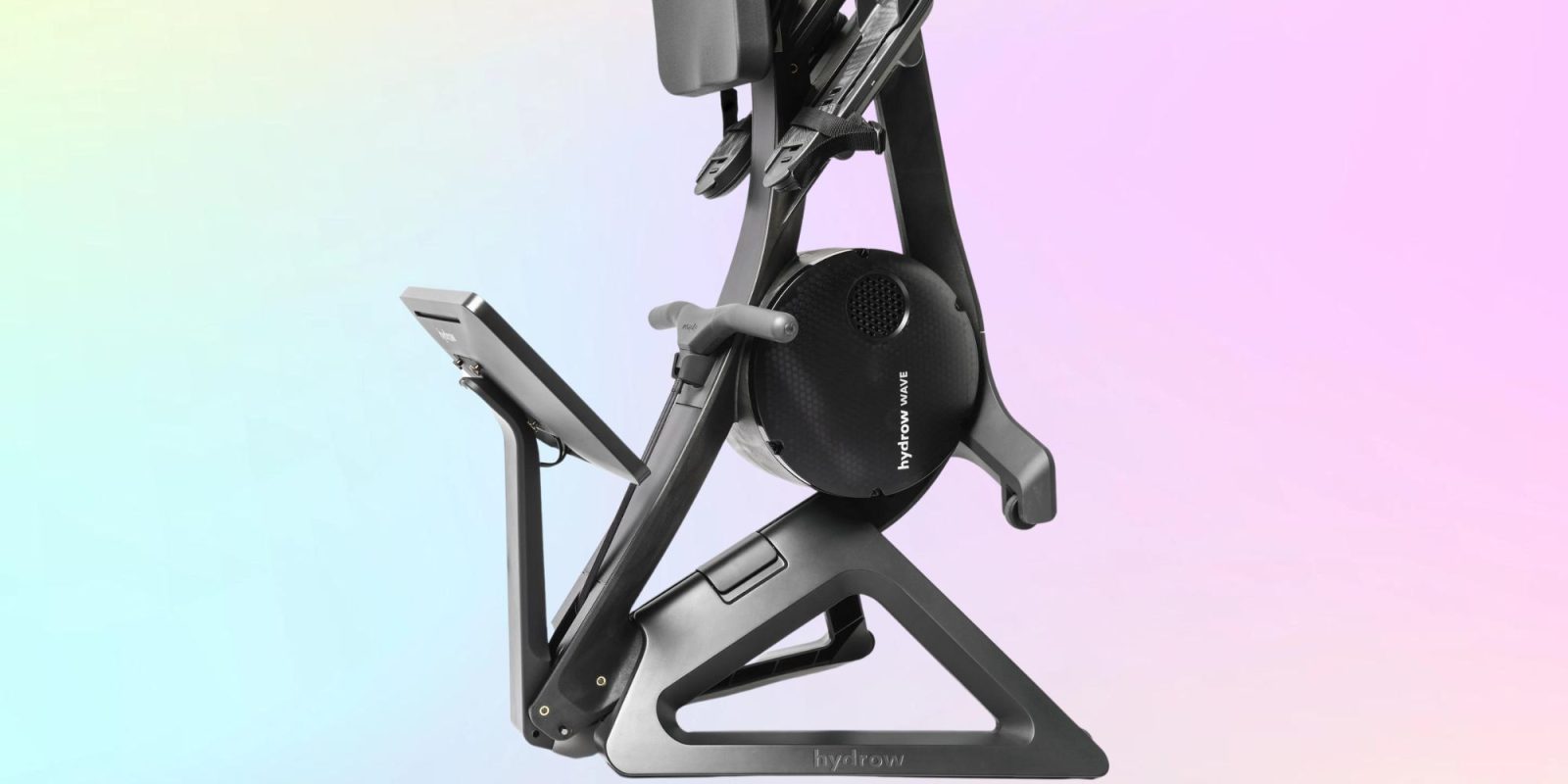
The recently released Hydrow Wave is a lower-cost, more space-efficient alternative to the original Hydrow rower. While that may sound great, a lot of changes have been made with the Hydrow Wave that you should consider. In this review, we will cover everything you need to know.
Table of contents
Hydrow Wave review and rower comparison video
Overview of the Hydrow Wave
The Hydrow Wave is the latest iteration of the original Hydrow rower. It is a completely revamped design that makes it smaller and lower priced, as Hydrow is working hard to get to hesitant buyers. Ultimately, the Wave does feel inferior to the original, but even an inferior Hydrow rower feels better than any other brands out there today.
Hydrow vs. Hydrow Wave specs
| Hydrow Wave | Hydrow | |
| Price | $1,495 | $2,495 |
| Dimensions | 80″L x 19″W x 43″H | 86″L x 25″W x 47″H |
| Stored dimensions | 26.5″W x 30″D x 82″H when using Vertical Anchor, sold separately | 25″W x 33″D x 86″H when using Upright Storage Kit, sold separately |
| Screen | 16″, 1920 x 1080 Full HD | 22″, 1920 x 1080 Full HD |
| Monitor adjustment | Up/Down: 15 degrees Left/Right: 25 degrees Folds for storage | Fixed screen Folds for storage |
| Weight | 102 lbs. | 145 lbs. |
| Height limit | Up to 36″ inseam | Up to 36″ inseam |
| Weight limit | 375 lbs. | 375 lbs. |
| Connectivity | Bluetooth, Wi-Fi | Bluetooth, Wi-Fi |
| Speakers | Front facing; 2-channel amplifier, 3W, 8 ohms | Front facing; 2-channel amplifier, 3W, 8 ohms |
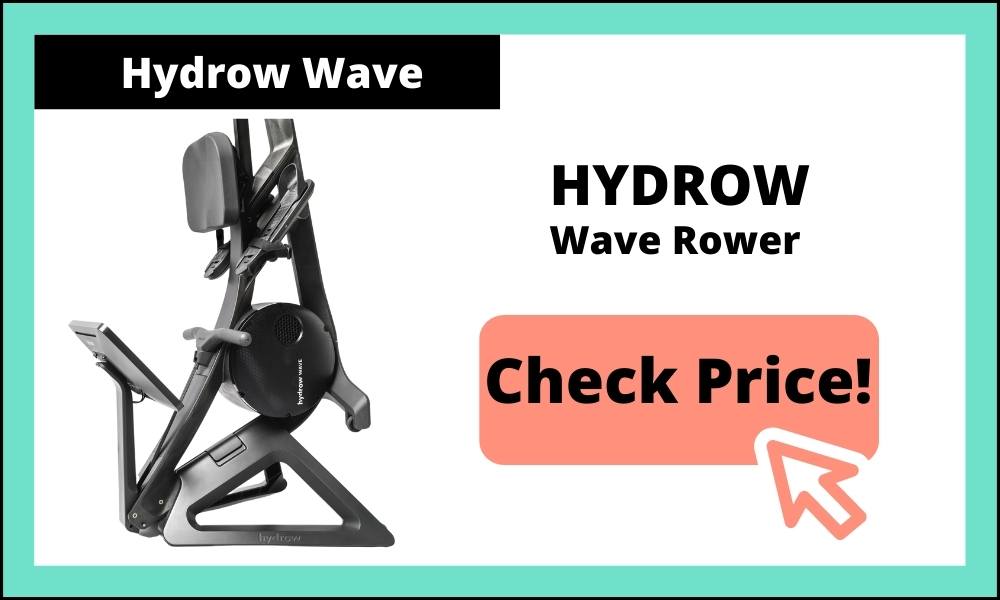
Design changes new to Hydrow Wave
There are a lot more design differences between the Hydrow Wave and the Original Hydrow Rower than I thought.
The change that is most visually obvious is the look of the Hydrow Wave itself. The change from a steel to polymer frame, plus a good amount of plastic casing, makes the Hydrow Wave significantly lighter than its predecessor.
The original Hydrow weighs in at 145 pounds, and the Hydrow Wave is only at 102 pounds, though both have the same max user weight of 375 pounds.
This change alone helped bring the cost of the rower down and made it easier and faster to ship. This means you won’t need to rely on a company like XPO for delivery.
Not just thanks to the lighter weight, a shorter length makes Hydrow Wave easier to move and lift upright. The original Hydrow is 86″ long, versus the Hydrow Wave at 82″ long.
Most of that height decrease came off the front of the rower, so it is still long enough for pretty much everyone under maybe 6′ 8″.
On top of the Hydrow Wave polymer frame is a stainless steel rail on which the seat glides. While I don’t like the look of this rail as much as I love the original, functionally, it works just as well.
The rail on the Hydrow Wave is thinner than what’s on the original, but the width between the footpads has remained the same.

Feet and seat
The Hydrow Wave footpads have a slightly different design than the original Hydrow, replacing the two-hole adjustment system with a single one. This is an improvement, as it does make it a little easier to adjust.
The seat on the rail of the Hydrow Wave is the same comfortable seat you find on the original Hydrow. And while the seat on the Hydrow Wave is now on a two-roller/two-idler mechanism, compared to the original with a 10-roller one, it doesn’t feel any less smooth.
What is quite a bit different and what I did not expect is that the height of the seat has been raised relative to the footpads by several inches.
This is going to be a beneficial change for most rowers, as having a higher seat relative to your feet makes it easier to get into, and to keep proper positioning.
Those with more limited flexibility will likely unknowingly benefit from this raised seat position.
The Hydrow Wave is a bit lower and closer to the ground than the original Hydrow. With it being lower, that tends to make it harder to get in and out for those who are heavier or have limited flexibility. The raised seat should help make up for this.
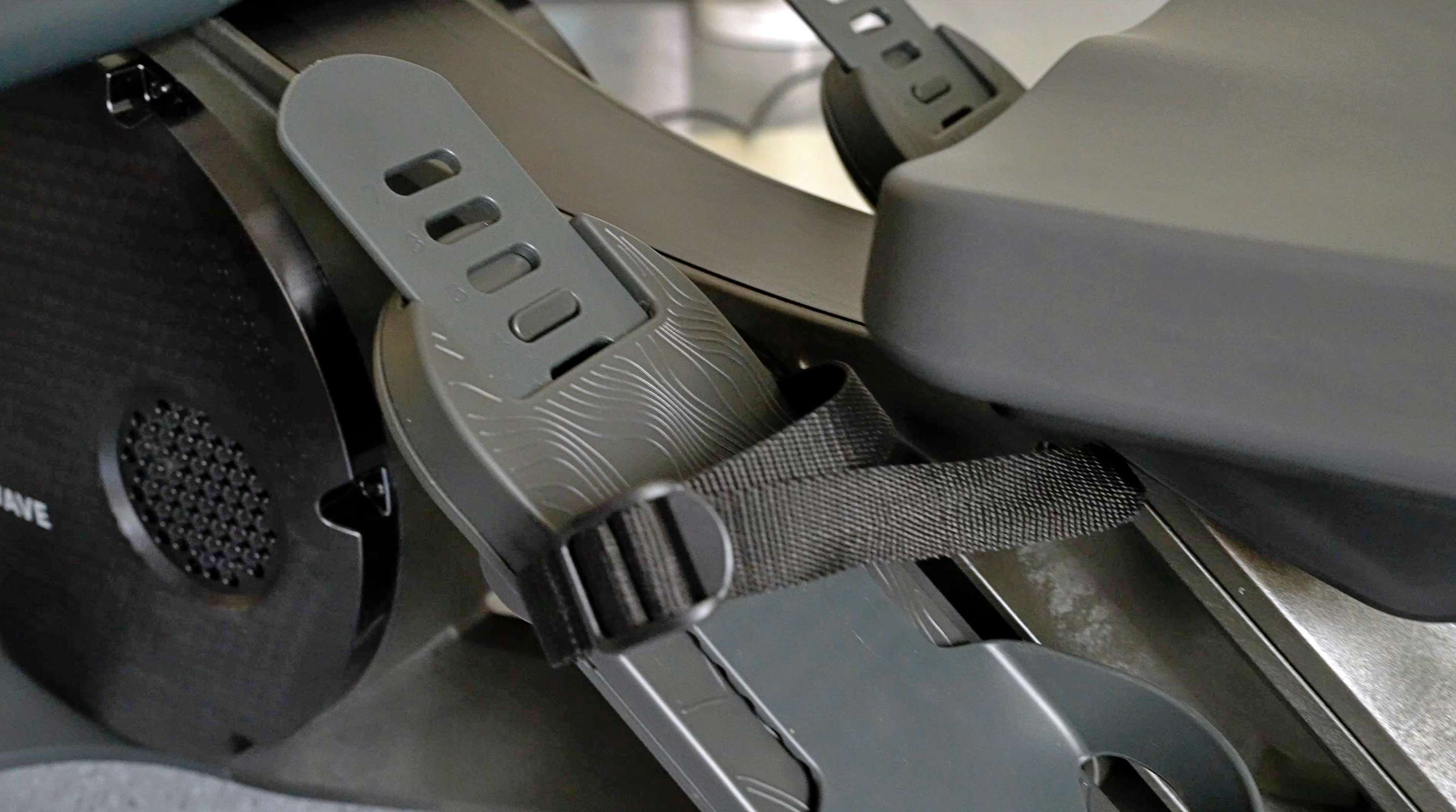
Pull
The handle on the Hydrow Wave is the same as the original, which, like the seat, is my favorite among rowers. However…
The Hydrow Wave pull feels, sounds, and behaves much differently than the original Hydrow.
It can be difficult to describe a feel, but I’ll try to break it down as best I can.
First, the snappy “pullback” of the original Hydrow has been greatly diminished. When you enter the return phase on a rower, the strap or chain attached to the handle tends to help pull you in, to a certain degree. This makes the rowing motion feel more natural and can, in many cases, make it easier to keep good form where your arms straighten out and your hips lean forward before your knees bend.
The original Hydrow had the strongest amount of this pullback of any rower, by far. And that is one of the reasons it feels so great to row on. With the Hydrow Wave, that pullback is significantly less. It’s not bad – it feels comparable to most other brand rowers – but it’s definitely not the same feeling you get with the original Hydrow.
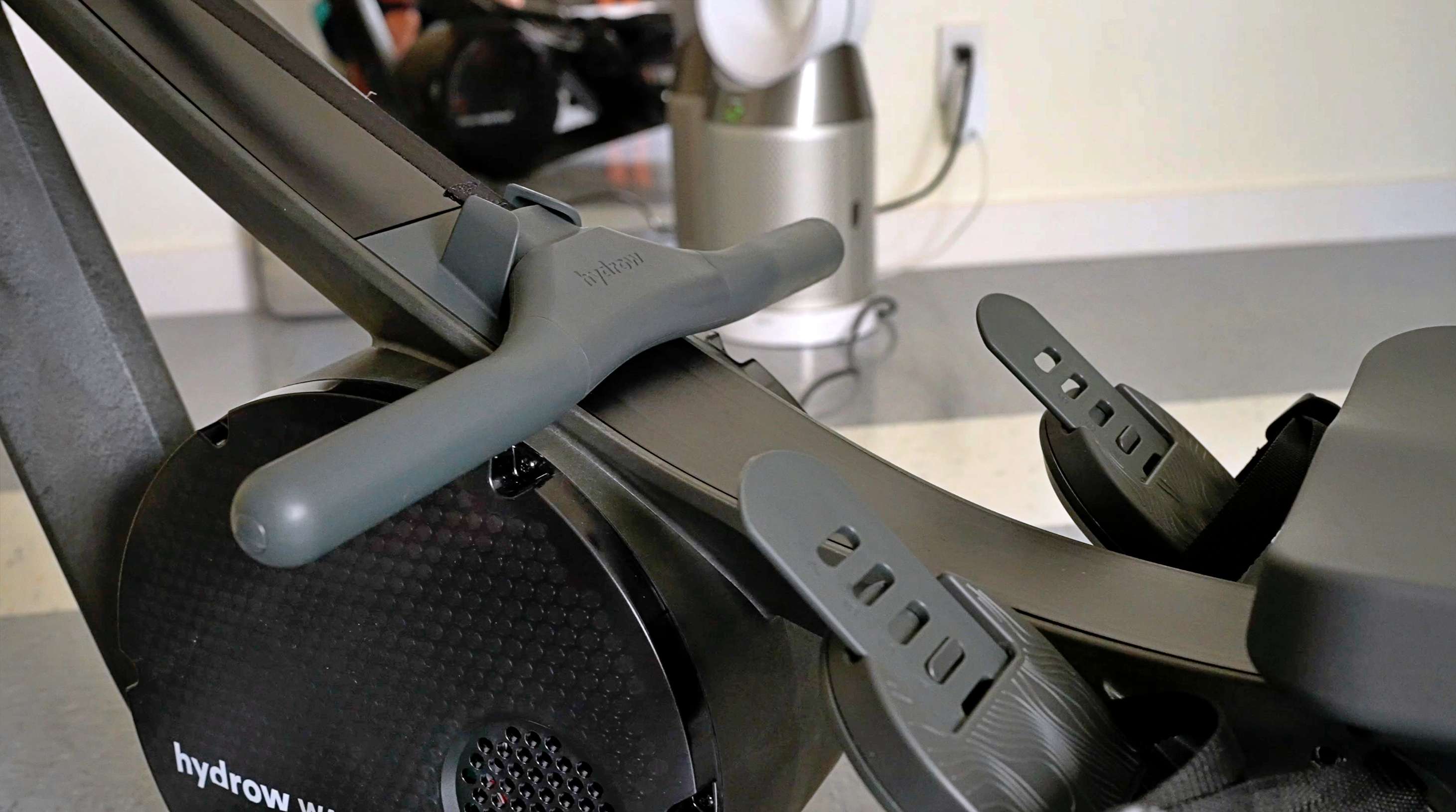
Drag
The mechanism for creating resistance, or drag, also feels very different on the Hydrow Wave versus the original. Rowers create resistance using water, air, magnets, or in a few cases, a hybrid.
The original Hydrow rower used a dynamic and responsive computer-controlled resistance – solely through electromagnetic resistance, which helped make it feel smoother and quieter than other brands’ rowers currently available.
The Hydrow Wave still uses dynamic and responsive computer-controlled resistance through electromagnetic resistance, but something significant has been changed here.
The sound is different for one, with it being louder and sounding a little like an air fan rower. It’s not nearly as loud as a full air fan rower, like the Concept 2, but louder than the original Hydrow.
The Hydrow Wave pull also does not feel nearly as smooth as the original Hydrow. Again, it’s not bad, but it doesn’t feel like the buttery smooth pull of the original Hydrow. If you row slowly, you can feel a sort of bumpiness to it.
That said, the Hydrow computer tech, which controls the resistance based on the drag level you set, feels consistent between the two rowers. It’s just that the Hydrow Wave won’t feel quite as smooth or give nearly as much pullback.
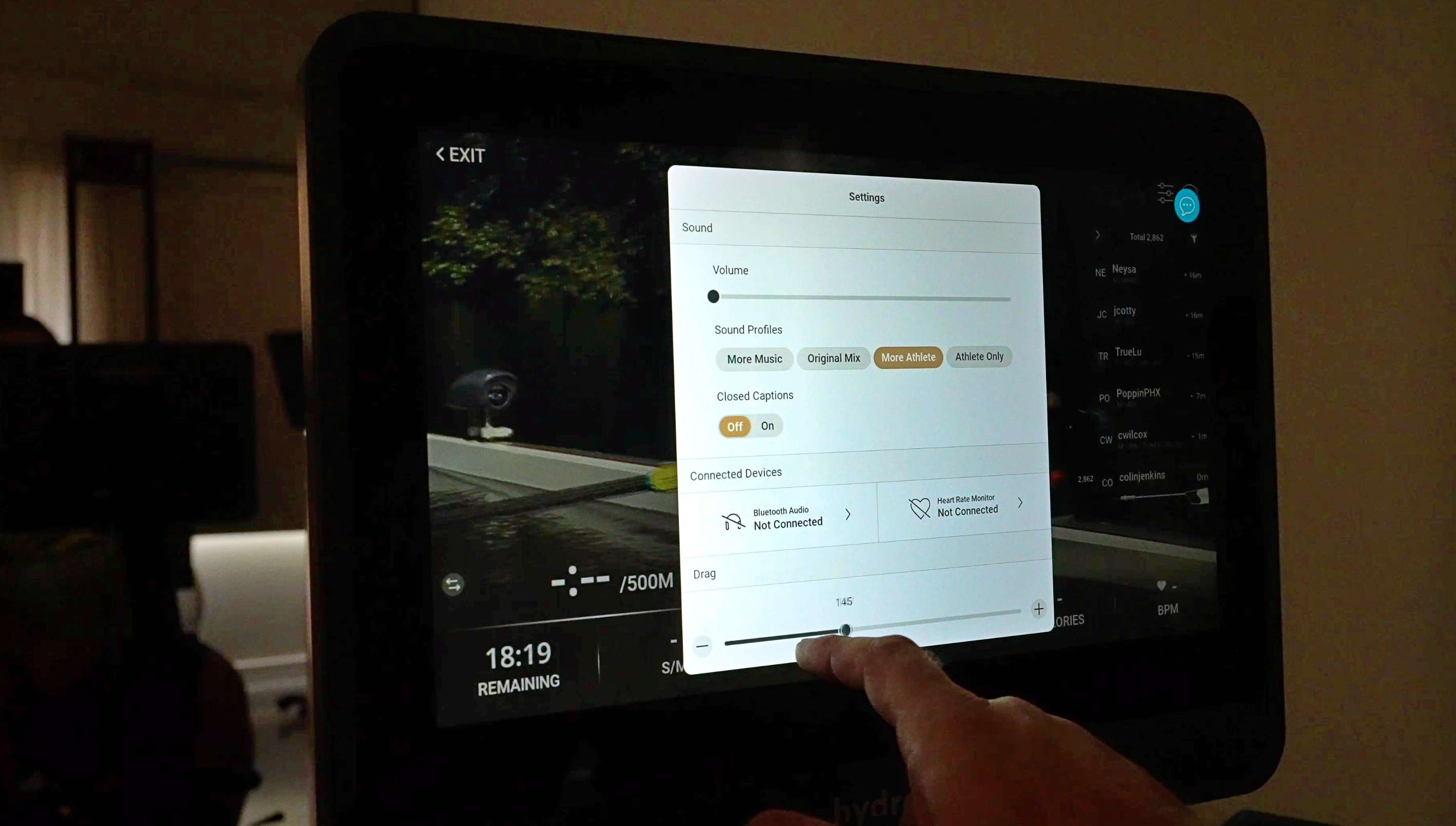
Screen
Moving onto the screen, the Hydrow Wave features a smaller, nonrotating 16″ HD touchscreen. This is compared with the original’s 22″ screen which could rotate 15 degrees up and down and 25 degrees left and right. The smaller display still looks great and feels great to use, as it’s very quick and responsive.
The screen is placed back a little further than on the original rower, which I actually prefer. The Hydrow Wave screen also seems to have a slightly darker contrast, making it better at eliminating glare.
Personally, I like the larger screen of the original slightly more. But my wife actually prefers the screen on the Hydrow Wave. So I don’t think the smaller screen will be too much of a drawback for most.
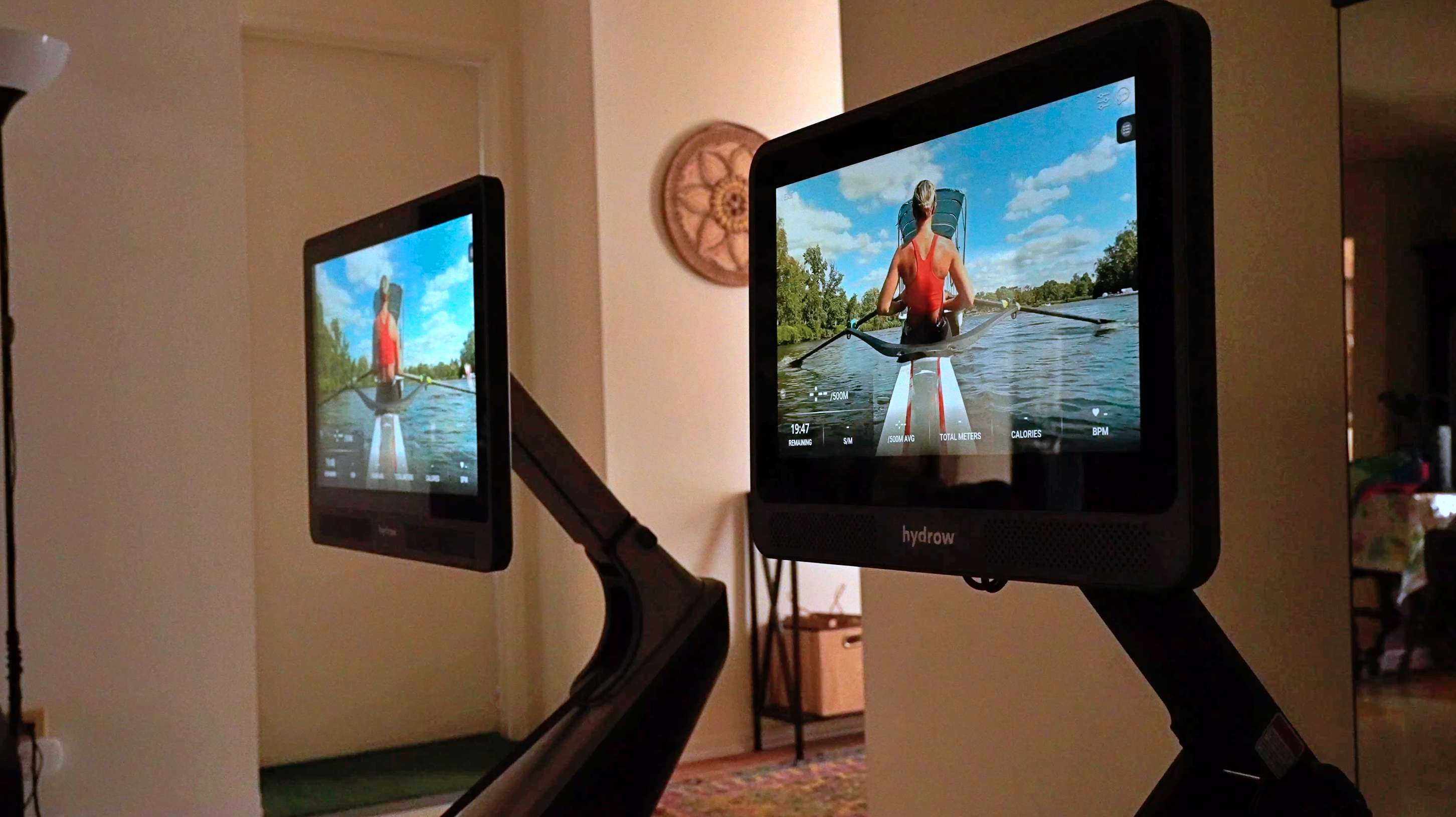
Storing Hydrow Wave and Hydrow
For storage, both the original Hydrow and Hydrow Wave can be stored upright, but only with the purchase of additional accessories.
With the original Hydrow, you need to purchase an $80 wall mount… though (and I do not suggest this, as it is probably not 100% safe) I just use some bungee cords and a wall-mounted hook to help keep it upright.
With the Hydrow Wave, though, you’ll need to purchase a $190 vertical anchor. This includes an attachment for the base of the rower and a wall mount. For the Wave, I really wouldn’t suggest using a workaround (like my bungee method) since the rower base of support is much smaller and less stable than the original Hydrow.
So if you plan on storing your Hydrow Wave upright, as I know most will, expect to spend an additional $200 on that storage kit.
A small, but noticeable, difference between the Hydrow Wave and the original is how the screen comes down. For both, if you want to store it upright, you should lower the screen down to avoid any damage. The original Hydrow features an easy button to do this; the Hydrow Wave uses a pin. The pin is still relatively easy to use but takes a little bit more effort than the simple button press.

Hydrow Membership
The all-access membership for Hydrow costs $38 per month, which includes access to their growing library of over 4,000 classes and an unlimited number of profiles on your rower.
Content
I find the Hydrow membership to be one of the better ones among connected fitness platforms. There’s a ton of variety between on-demand and live classes, workout types, class lengths, technical skills and practice, and locations.
What really sets Hydrow apart are their production and coach quality. Hydrow is really the only company to produce consistently high-quality, outdoor rowing, and it’s definitely the only connected fitness company to provide (almost) daily live rowing workouts on the water.
The video quality and sound are excellent and, in my opinion, a big improvement over more traditional connected fitness classes that take place in a studio.
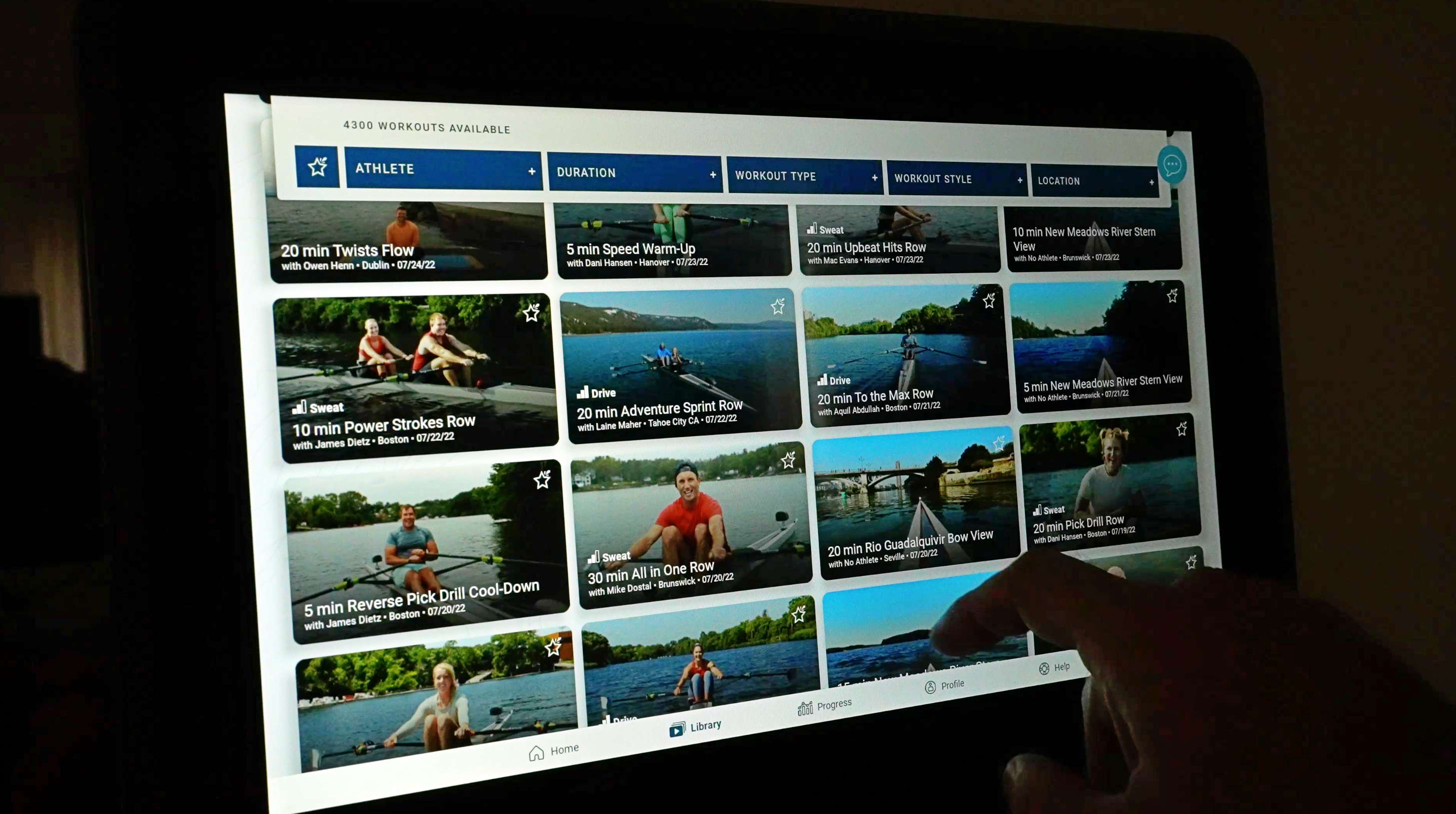
Coaches
My biggest compliment to Hydrow goes to their coaches. I cannot think of any other connected fitness program in which all of the coaches are equally excellent.
Whereas a lot of fitness programs hire actors or dancers to coach, since they are easiest to transition to on-camera work, Hydrow’s coaches are all experts on rowing. And somehow, they all seem to provide a unique mix of entertainment, motivation, and excellent instruction.
Hydrow may not be as attractive to some because it’s “just rowing,” but it is that singular commitment to rowing that I feel has allowed them to develop products that are this excellent.
Shortcomings
That’s not to say the Hydrow membership is perfect, though.
They only have a handful of fully built-out programs, and the leader board cannot be interacted with during workouts, only afterward. The strength classes are almost entirely body weight, taught by a single coach, and the achievement system and workout tracking are limited.
You can see more of your workout tracking with the app, but overall, it falls behind other connected fitness brands in this area. And there’s no way to do some basic things that you can do on nonconnected rowers – stuff like building your own workout or setting up intervals.
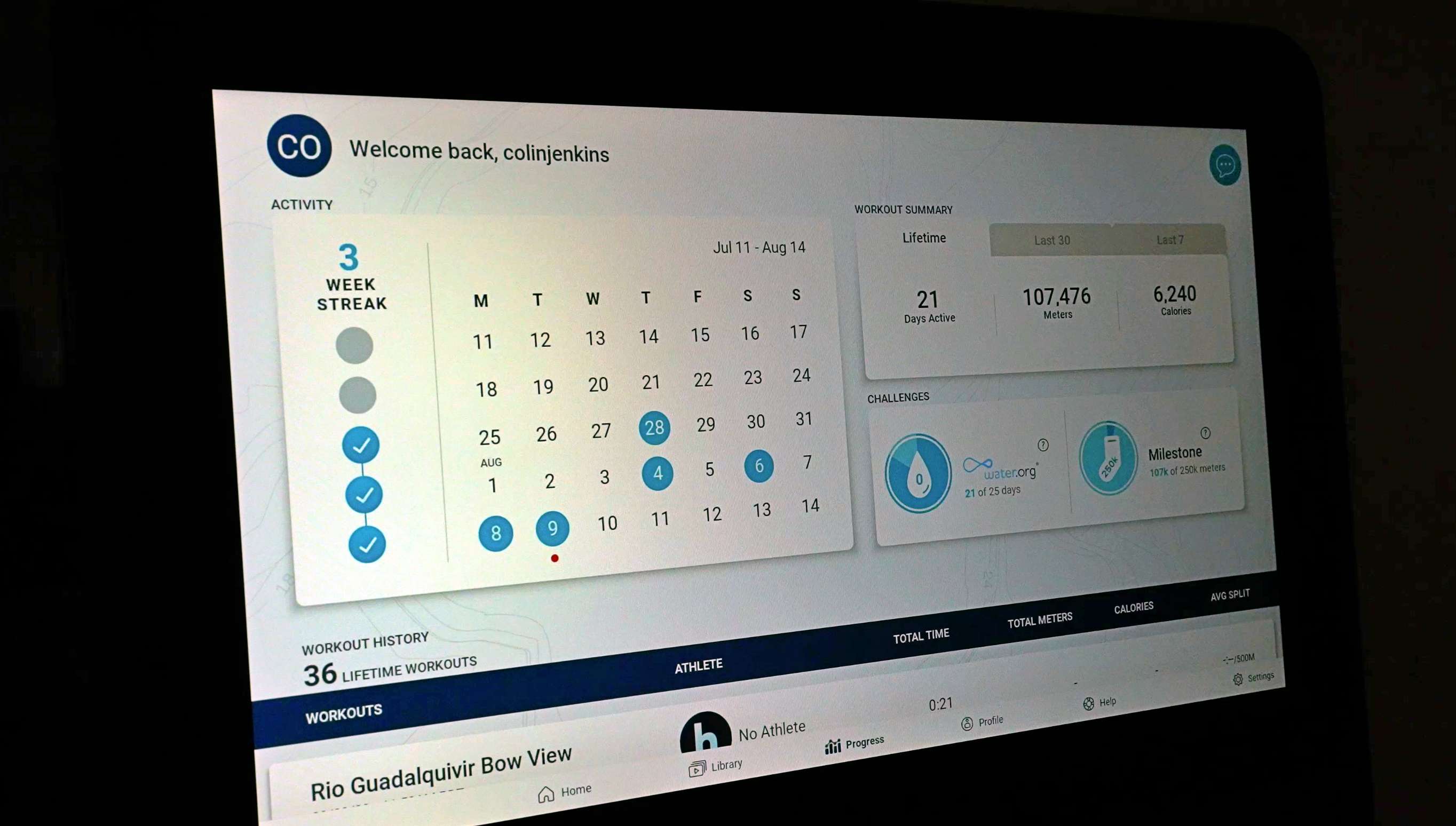
You can export your workouts automatically to some third-party apps, like Strava, which I suggest setting up if you want to better track and analyze your Hydrow workouts.
Hopefully, a lot of these small things will be improved upon over time, but the most important parts – the parts that are hard for companies to develop, such as an excellent assortment of coaches and solid production – are already dialed in with Hydrow.
Final thoughts
Rating Hydrow Wave on a “Buy, Lease, Wait for a Sale, or Do Not Touch” scale, I would say the Hydrow Wave is definitely a “Buy.”
It may not feel or look as good as the original, but at the end of the day, you are saving around $1,000. I think the trade-off, for most people, is absolutely going to be worth it.
Suggested articles:
- Aviron Rower review: a workout for gamers!
- 2022 Ergatta Rower review – How I feel after 6 months of rowing
- NordicTrack RW900 Rower review – updated 2022 model
FTC: We use income earning auto affiliate links. More.


